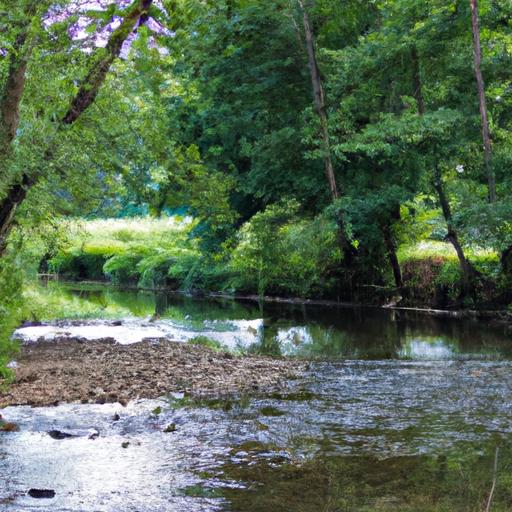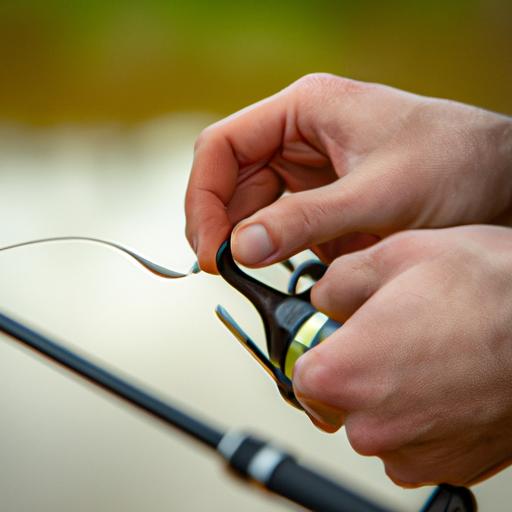Detention – a word that often evokes a sense of dread and monotony in the minds of students. But what if I told you that detention could actually be a time for growth, development, and even fun? That’s where detention recreation comes into play. In this article, we will explore the concept of detention recreation and discover its significance in the lives of students.
A. Definition of Detention Recreation
Detention recreation refers to the incorporation of recreational activities into the traditional detention setting. It aims to transform the often negative and punitive environment into a more positive and engaging one. Through detention recreation, students are provided with opportunities to participate in various activities that promote physical, mental, and emotional well-being.
B. Importance of Detention Recreation for Students
Detention recreation is not just about filling time or merely distracting students from their disciplinary consequences. It goes beyond that. By introducing recreational activities, detention becomes a platform for personal growth, skill-building, and fostering positive behavior.
Detention recreation recognizes that students need more than just punishment. It acknowledges their need for support, engagement, and outlets for their energy. By engaging students in recreational activities during detention, it offers them a chance to develop important life skills, improve their overall well-being, and cultivate a positive mindset.
Research has shown that physical activity can have a profound impact on academic performance and behavior. When students engage in recreational activities, they experience increased blood flow to the brain, leading to improved focus, concentration, and cognitive function. Furthermore, physical activity releases endorphins, providing students with a natural mood booster and stress reliever.
In the next section, we will delve deeper into the specific benefits of detention recreation, exploring how it positively impacts both the physical and mental well-being of students.
Benefits of Detention Recreation
Detention recreation isn’t just about having a good time; it offers a myriad of benefits that can positively impact students’ lives. Let’s explore the physical and mental health advantages that detention recreation brings.
A. Physical Health Benefits
Detention recreation provides students with opportunities to engage in physical activities, promoting their overall physical well-being. Here are some specific physical health benefits:
1. Increased Activity Levels
Traditional detention often involves sitting for long periods, which can have detrimental effects on students’ health. However, detention recreation encourages movement and active participation. By incorporating activities such as sports, yoga, or even simple exercises, students can enjoy increased activity levels, leading to improved fitness and energy levels.
2. Improved Cardiovascular Health
Engaging in physical activities during detention recreation can have a positive impact on cardiovascular health. Regular exercise helps strengthen the heart, improve blood circulation, and lower the risk of heart disease. By participating in activities that get their hearts pumping, students can experience long-term benefits for their cardiovascular systems.
B. Mental Health Benefits
Detention recreation isn’t just about physical well-being; it also plays a crucial role in supporting students’ mental health. Here are some mental health benefits:
1. Stress Relief
Detention can be a stressful experience for students, often accompanied by feelings of anxiety and frustration. Detention recreation acts as a stress reliever by providing a positive and enjoyable outlet for these emotions. Engaging in recreational activities allows students to redirect their focus and release tension, helping them feel more relaxed and centered.
2. Enhanced Mood and Well-being
Participating in recreational activities during detention can significantly impact students’ moods and overall well-being. Physical exercise releases endorphins, commonly known as “feel-good” hormones, which can elevate students’ moods, reduce feelings of depression, and increase overall happiness. Detention recreation provides a space for students to experience joy, fostering a positive mindset and improving their overall mental well-being.
As we move forward, we will explore the various types of detention recreation activities, both indoors and outdoors, that can be implemented to maximize the benefits discussed above.
Types of Detention Recreation Activities
Detention recreation offers a wide array of activities to keep students engaged, motivated, and energized during their time in detention. These activities can be categorized into indoor and outdoor options, providing opportunities for both mental stimulation and physical exercise.
A. Indoor Activities
-
Board Games: Board games are a fantastic way to promote critical thinking, problem-solving, and social interaction among students. Classics like chess, Scrabble, or Monopoly not only entertain but also encourage strategic thinking, decision-making, and healthy competition. Additionally, cooperative board games can foster teamwork and collaboration, helping students develop valuable interpersonal skills.
-
Art and Crafts: Engaging in artistic endeavors during detention can unleash creativity and serve as a therapeutic outlet for students. Whether it’s painting, drawing, or crafting, art activities provide an avenue for self-expression, stress reduction, and emotional well-being. Students can explore various mediums and techniques, allowing their imagination to flourish and helping them develop patience, focus, and attention to detail.
B. Outdoor Activities
-
Sports: Physical activity is an integral aspect of detention recreation, and outdoor sports provide an excellent opportunity to get students moving and energized. Organizing games like soccer, basketball, or volleyball not only promotes physical fitness but also instills teamwork, sportsmanship, and leadership skills. These activities encourage students to work together, communicate effectively, and develop a sense of camaraderie.
-
Team-building Exercises: Detention recreation can also incorporate team-building exercises, which foster trust, cooperation, and problem-solving skills. Some examples include rope courses, trust falls, or group challenges that require students to work together to achieve a common goal. These activities not only strengthen interpersonal relationships but also enhance communication skills and resilience.
By offering a diverse range of activities, detention recreation ensures that students have opportunities for self-expression, personal growth, and skill development. In the following section, we will explore the implementation of detention recreation programs and how schools can successfully integrate them into their disciplinary practices.
Implementing Detention Recreation Programs
When it comes to implementing detention recreation programs, collaboration, resources, and training are key factors that contribute to the success of such initiatives. Let’s explore the necessary steps to ensure these programs are effectively integrated into the detention setting.
A. Collaboration with Physical Education Teachers
To create a comprehensive detention recreation program, collaboration with physical education teachers is crucial. These educators possess expertise in designing and implementing engaging physical activities that promote fitness and well-being. By working together, detention supervisors can tap into their knowledge and experience to develop a diverse range of recreational activities suitable for the detention environment. This collaboration also helps in aligning detention recreation with the broader physical education curriculum, creating a consistent approach to student well-being.
B. Allocating Sufficient Resources and Space
Detention recreation programs require adequate resources and space to ensure their effectiveness. Schools should allocate resources such as sports equipment, board games, art supplies, and other materials necessary for the activities. Additionally, providing a designated space within the detention area specifically designed for recreational purposes enables students to engage in these activities comfortably. When students have access to the required resources and a conducive environment, they are more likely to participate actively and reap the benefits of detention recreation.
C. Training Staff Members in Organizing Recreational Activities
Proper training of staff members is essential for the successful organization of detention recreation activities. Detention supervisors and other staff involved should receive training on how to plan, facilitate, and manage the recreational sessions effectively. This training can cover areas such as activity selection, behavior management, and fostering a positive and inclusive environment. Equipping staff members with the necessary skills and knowledge ensures that detention recreation programs are implemented smoothly and that students receive the best possible experience during their time in detention.
In the following section, we will explore success stories that highlight the positive outcomes of detention recreation programs, providing inspiration and evidence of their effectiveness.
Success Stories of Detention Recreation Programs
Detention recreation programs have been implemented in various educational institutions, showcasing remarkable success stories that highlight the positive outcomes they bring. Let’s explore some of these case studies and see how detention recreation has made a significant impact on student behavior, discipline, attendance, and engagement.
A. Case Studies Highlighting Positive Outcomes
1. Improved Behavior and Discipline
In one case study conducted in a high school, detention recreation programs were introduced as an alternative to traditional detention. Students who participated in these programs showed significant improvements in their behavior and discipline. By providing them with engaging activities and a supportive environment, these programs helped students develop a sense of responsibility and self-control. They learned to manage their emotions, resolve conflicts peacefully, and make better choices in the future.
2. Increased Attendance and Engagement
Another success story comes from an elementary school that implemented detention recreation programs to address issues of low attendance and disengagement. By offering recreational activities during detention, the school saw a remarkable increase in student attendance. Students who previously avoided detention now willingly attended, as they saw it as an opportunity for fun and social interaction. Moreover, the engagement levels of these students significantly improved, leading to a positive impact on their overall academic performance.
These success stories demonstrate the power of detention recreation programs in transforming the educational landscape. By shifting the focus from punishment to growth and support, these programs have proven to be effective in reshaping student behavior, discipline, attendance, and engagement.
In the following section, we will conclude our exploration of detention recreation, summarizing the benefits it offers and emphasizing the importance of implementing such programs in schools.
Conclusion
Detention recreation is not just a buzzword or a fleeting trend; it is an essential aspect of creating a positive and supportive environment for students. By reimagining detention as a time for growth and engagement, we can unlock a multitude of benefits for students.
Throughout this article, we have explored the definition of detention recreation and its importance in the lives of students. We have discovered how recreational activities during detention can promote physical health, improve mental well-being, and foster positive behavior.
By incorporating detention recreation programs, schools can create an atmosphere that values the holistic development of students. These programs provide an outlet for pent-up energy, a platform for skill-building, and a chance to cultivate positive relationships among peers.
The success stories of detention recreation programs are a testament to their efficacy. Improved behavior, increased attendance, and higher levels of engagement are just a few of the positive outcomes observed in schools that have implemented such programs. These success stories serve as inspiration and motivation for other institutions to embrace detention recreation and its transformative power.
In conclusion, detention recreation has the potential to revolutionize traditional detention practices, turning them into opportunities for growth and development. It is time to shift our perspective and recognize that detention can be more than just a form of punishment. Let’s embrace detention recreation and create an educational environment that truly supports the well-being and success of our students.
So, the next time you hear the phrase “detention recreation,” remember that it’s not just about activities and games. It’s about investing in the future of our students, providing them with the tools and support they need to thrive. Together, let’s unlock the power of detention recreation and create a brighter future for our educational institutions.




